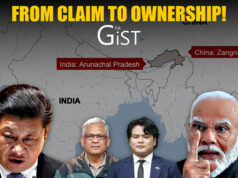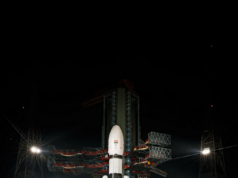A massive 8.8-magnitude earthquake off Russia’s Kamchatka Peninsula triggered 5-metre tsunami waves and prompted evacuation orders across the Pacific, including as far as Hawaii on Wednesday.
The shallow earthquake damaged buildings and injured several people in the remote Russian region, while much of Japan’s eastern seaboard – devastated by a 9.0 magnitude earthquake and tsunami in 2011 – was ordered to evacuate.
A resident in the city of Petropavlovsk-Kamchatsky said the shaking went on for several minutes.
“I decided to leave the building,” said Yaroslav, 25. “It felt like the walls could collapse any moment. The shaking lasted continuously for at least 3 minutes.”
Video footage released by the region’s health ministry showed a team of medics in Petropavlovsk-Kamchatsky performing surgery as the tremors shook their equipment and the floor beneath them.
Tsunami Waves Hit
Tsunami waves struck parts of Kamchatka, partially flooding the port and a fish processing plant in the town of Severo-Kurilsk and sweeping vessels from their moorings, regional officials and Russia’s emergency ministry said.
Verified drone footage showed the town’s entire shoreline was submerged, with taller buildings and some storage facilities surrounded by water, which was seen pouring back into the sea.
“Today’s earthquake was serious and the strongest in decades of tremors,” Kamchatka Governor Vladimir Solodov said in a video posted on the Telegram messaging app. Russian scientists said it was the most powerful to hit the region since 1952.
In Hawaii, waves of up to 1.7 metres (5.5 feet) impacted the islands before the Pacific Tsunami Warning Centre reduced its warning level for the state around 0850 GMT, saying no major tsunami was expected.
Coastal residents were earlier told to get to high ground or the fourth floor or above of buildings, and the U.S. Coast Guard ordered ships out of harbours.
Flights out of Honolulu airport resumed later, the transportation department said, while the main airport in Maui remained closed, with passengers sheltering in the terminal.
Tsunami waves of nearly half a metre were observed as far as California, with smaller ones reaching Canada’s province of British Columbia.
Warnings Across The Pacific
The U.S. Geological Survey said the earthquake was shallow at a depth of 19.3 km (12 miles), and centred 119 km (74 miles) east-southeast of Petropavlovsk-Kamchatsky, a city of 165,000.
Tsunami alarms sounded in coastal towns across Japan’s Pacific coast, and evacuation orders were issued for tens of thousands of people.
Workers evacuated the stricken Fukushima nuclear plant, where a meltdown following the 2011 tsunami caused a radioactive disaster, operator TEPCO said.
Footage on public broadcaster NHK showed scores of people on the northern island of Hokkaido on the roof of a building, sheltering under tents from the sun, as fishing boats left harbours to avoid any damage from incoming waves.
Broadcaster Asahi TV reported that a 58-year-old woman died when her car fell off a cliff while she was evacuating in central Japan’s Mie prefecture.
Automaker Nissan Motor suspended operations at some factories in Japan to ensure employee safety, Kyodo news agency reported.
Three tsunami waves had been recorded in Japan, the largest of 1.3 metres (4.3 feet), officials said.
Chief Cabinet Secretary Yoshimasa Hayashi said no injuries or damage had been reported, and there were no irregularities at any nuclear plants.
Tsunami waves of 1 to 3 metres (3-9 feet) can be fatal for people who are swept away, said NHK.
The U.S. Tsunami Warning System said waves of more than 3 metres were possible along some coasts of Russia, the northern Hawaiian islands and Ecuador, while waves of 1-3 metres were possible in countries including Japan, Hawaii, Chile and the Solomon Islands.
‘Ring Of Fire’
Russia’s Ministry for Emergency Services said on Telegram that a kindergarten was damaged, but most buildings withstood the quake. No serious injuries or fatalities have been reported.
Several people in Kamchatka sought medical assistance following the quake, Oleg Melnikov, regional health minister, told Russia’s TASS state news agency.
In Severo-Kurilsk in the northern Kuril islands, south of Kamchatka, tsunami waves exceeded 3 metres, with the largest up to 5 metres, Russia’s RIA news agency reported.
Alexander Ovsyannikov, the town’s mayor, urged residents to assess damage to their homes and not to use gas stove heating until inspections had been carried out.
Kamchatka and Russia’s Far East sit on the Pacific Ring of Fire, a geologically active region that is prone to earthquakes and volcanic eruptions.
“However, due to certain characteristics of the epicentre, the shaking intensity was not as high … as one might expect from such a magnitude,” said Danila Chebrov, director of the Kamchatka Branch of the Geophysical Service, on Telegram.
“Aftershocks are currently ongoing … Their intensity will remain fairly high. However, stronger tremors are not expected in the near future. The situation is under control.”
(With inputs from Reuters)




